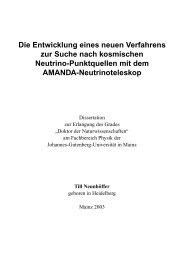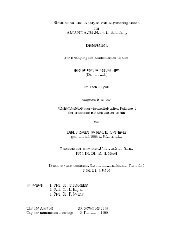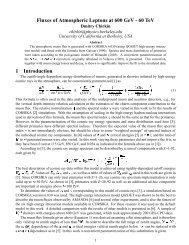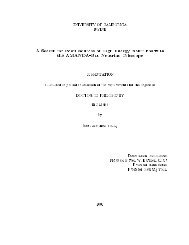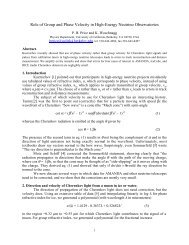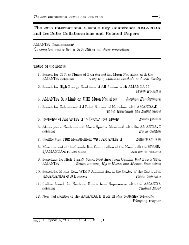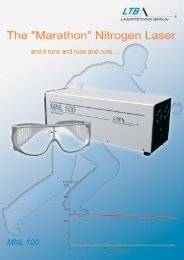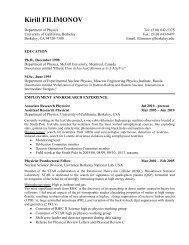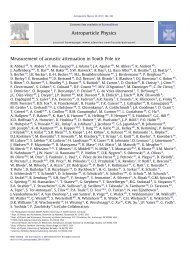Link to Fulltext
Link to Fulltext
Link to Fulltext
Create successful ePaper yourself
Turn your PDF publications into a flip-book with our unique Google optimized e-Paper software.
λ a [m]<br />
105<br />
100<br />
95<br />
90<br />
85<br />
80<br />
75<br />
OMs 11,12,27,33,71<br />
90% C.L.<br />
λ e = (23.9±0.6) m<br />
λ a = (88.8±3.2) m<br />
ρ = 0.79<br />
99.99% C.L.<br />
χ 2<br />
min /NDF = 268/228<br />
70<br />
20 21 22 23 24 25 26 27 28<br />
λe [m]<br />
Figure 29: Con<strong>to</strong>ur plot of the value yielded by comparing data time distributions with their simulated counterparts<br />
varying the parameters ¡£¢ and ¡¥¤§¦¨¦ .<br />
The dependence of ¢ on wavelength can be useful for other purposes though (simulation, computation<br />
of energy loss by Cherenkov emission) and is shown in the curve in Fig. 32, taken from<br />
[65].<br />
Distance(m)*count rate(/256Hz)<br />
10 5<br />
10 4<br />
1000<br />
100<br />
350nm-1950mA<br />
350nm-1480mA<br />
350nm-1200mA<br />
1σ<br />
0 50 100 150 200 250<br />
Distance (m)<br />
Figure 30: Distance © counting rate versus distance for DC lamp source emitting 350 nm pho<strong>to</strong>ns. The datapoints<br />
are well fitted by an exponential, as expected from Eq. 53<br />
42



